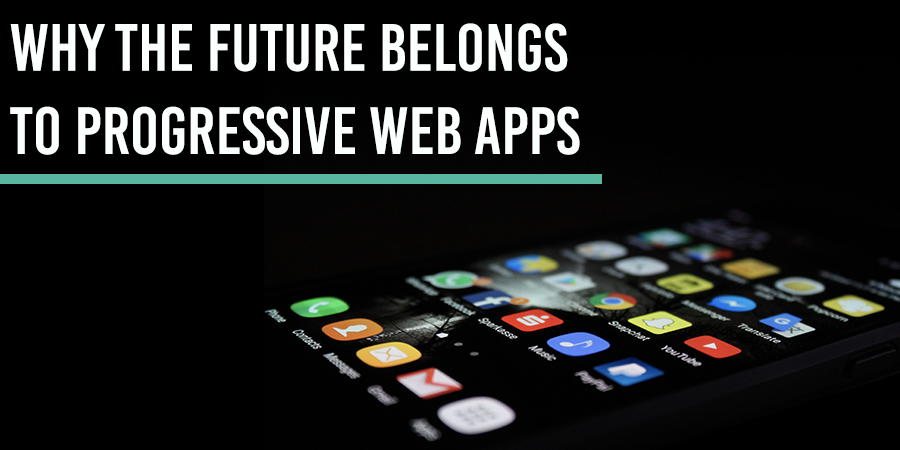Today, Progressive Web Apps are helping brands like Twitter, Spotify, Tinder, and more to provide their customers or users with a great native app like user experience (UX) without the challenges that come with developing applications.
What are Progressive Web Apps?
A Progressive Web App (PWA) is a mobile app that is accessed through the web. A PWA has a similar feel and functionality of native apps. However, a PWA does not need to be downloaded from the app store, though this is an option in Google's Play Store.
People can accessed a PWA via their a mobile web browser and save them directly to the home screen of their smartphone just like any other app. Thanks to the assistance of service workers, a PWA loads instantly. Pre-caching allows a PWA to remain up to date at all times ensuring the user has access to the most recent version of the PWA without requiring them to update the app.
Three Benefits of Progressive Web Apps
There are several reasons as to why Progressive Web Apps will eventually replace native apps. These include the many benefits they bring to both the users as well as the developers.
For the user, a PWA is more convenient than native apps. This stems from the fact that a PWA loads faster and consumes less resources than native apps.
1) Greater Convenience
To use any native app, users must find and download the app via their app store. This need to download an app can become far too great of an obstacle for many users. A study by Google showed that difficulty experienced when attempting to download an application causes nearly 70% of the people to terminate the download. The PWA avoids this obstacle by being immediately accessible through the web, which in turn can increase the likelihood that people use it.
Furthermore, the need to download a native app requires the use of the device’s memory.
As the available memory fills up with apps, music, photos, videos, and more, users often face the dilemma of having to clear memory in order to make more room for new additions. While a PWA can be saved to the home screen as a thumbnail for convenience, it occupy significantly less space on the hard drive than native apps.
2) Improved Performance
When compared to native apps, Progressive Web Apps run much faster while also consuming less data in the process. This has resulted in several gains for companies like Twitter, Tinder, Pinterest, Forbes, Starbucks, and many more that have made the switch to a PWA.
Aiming to increase user engagement by providing a greater user experience, quicker load times, and less data consumption, Twitter developed Twitter Lite, the PWA version of its native app. Launched worldwide in 2017, Twitter witnessed a 65% increase in pages per session, 75% increase in Tweets sent, and a 20% decrease in bounce rate thanks to its PWA.
“Twitter Lite is now the fastest, least expensive, and most reliable way to use Twitter. The web app rivals the performance of our native apps but requires less than 3% of the device storage space compared to Twitter for Android.”
- Nicolas Gallagher, the Engineering Lead for Twitter Lite.
In the case of Tinder, load times for its PWA were about 50% faster than that of its native app. This led to longer sessions and greater use of the site, especially since it was now accessible on mobiles, tablets, and desktops thanks to its PWA.
People who use Pinterest’s PWA spend 40% more time on its site when compared to native app users. This helped Pinterest gain a 44% increase in its ad revenue while also experiencing a 60% increase in user engagement.
3) Greater Efficiency
For developers, it is cheaper and more efficient to build and maintain a PWA than native apps due its greater versatility.
When a native app is built, additional versions also need to be built to accommodate various devices (mobiles and tablets) and operating systems (Android, iOS, Windows, etc.) on the market. In many situations, organizations must also develop websites that to accommodate people who will not use the mobile app at all or prefer using a website to make a purchases, appointment, reservation, etc. The need to develop multiple apps and a website creates a ton of work for development team, quality assurance team, and extra costs for organizations.
Since the same PWA works across all the operating systems and devices, development times and effort are drastically reduced. Furthermore, the company can replace the mobile version of its website with the very same PWA. All of this results in a significantly lower demand for labor, which organizations can use to invest in other important projects.
At the end of the day, new technology brings many new benefits to the marketplace. While Progressive Web Apps won’t replace native apps overnight, investing in a PWA is a good strategy for any organization looking to enhance its digital platforms and ROI. Nonetheless, every PWA, like any other digital product, requires QA testing in order to obtain the great ROI’s that Tinder, Pinterest, Twitter, and many others have gained.
To learn more about the current state of Progressive Web Apps, please do not hesitate to discover our infographic below.





